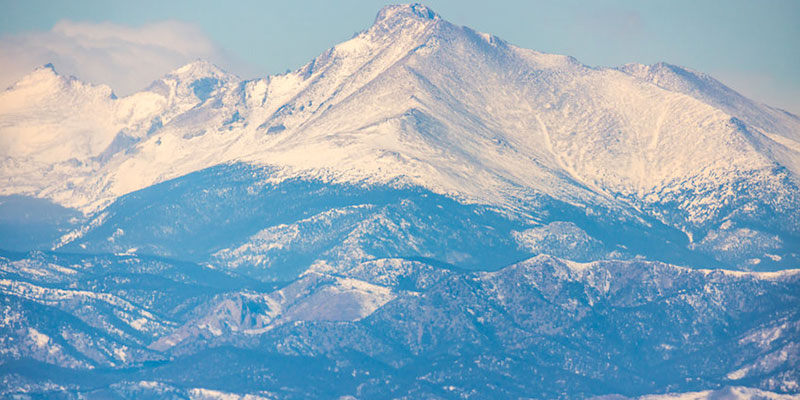Mountain snowpacks provide vital water, so a future with less snow will have dramatic implications for water storage in the western U.S.
Researchers predict a less snowy future in which water reuse can make every drop of available water count
Mountain snowpacks provide vital water storage for downstream communities, ecosystems, agriculture, and industry. They release water gradually into the summer, when demand is high and precipitation is low. The warming climate, however, is shrinking mountain snowpacks globally, and climate models show that the trend is likely to continue.
In response, a new study from the Lawrence Berkeley National Laboratory has established a probable timeline for a future with little or no snow, analyzing its implications for water management and identifying actions we can take to prepare.
The review paper, “A low-to-no snow future and its impacts on water resources in the western United States,” appeared in October in the journal Nature Reviews Earth & Environment. It warns that if high greenhouse gas emissions continue, low- to no-snow winters will be common in the western U.S. within 35 to 60 years.
California may see episodic periods of little or no snow by the late 2040s and persistent conditions by the 2060s. In other parts of the West, persistent low- to no-snow conditions are predicted to appear in the 2070s. The researchers warned:
Through the middle and end of the 21st century, an increasing fraction of the western U.S. is impacted by snow water equivalent deficits relative to the historical period. In particular, only 8 to 14% of years are classified as low-to-no snow over 1950-2000, compared to 78 to 94% over 2050-2099. In all regions, an abrupt transition occurs in the mid-to-late 21st century.
A future with dramtically less snow means more than just lower streamflows and other direct impacts. It will have dramatic implications for water storage in the western U.S. and secondary impacts on natural and managed systems, including more wildfires, vegetation changes, and changes in hydrologic systems.
Although the study is based on a literature review of hundreds of snow-loss studies and an analysis of 18 studies with quantitative snowpack predictions for the West, the authors stressed a need for more research to enhance confidence in their timeline.
Collaboration and New Strategies
The researchers also urged the formation of nontraditional academic and water agency partnerships. One such collaborative is HyperFACETS, a new Department of Energy-supported project that involves 11 research institutions working with water utility managers in California, Colorado, Florida, and Pennsylvania.
The paper also discusses managed aquifer recharge, the storage of water underground in wet times for later use, as well as a promising strategy called forecast-informed reservoir operations, which uses weather and hydrological forecasts to help decide when to retain or release water from reservoirs. Recently, the strategy increased water storage in California’s Lake Mendocino by 33%.
The paper recommended that stakeholders work together despite the fact that city managers’ interest in flood control, farmers’ interest in water storage, and even the interests of scientific disciplines are cloistered in different aspects of hydrology. Erica R. Siirila-Woodburn, one of the study’s lead authors, noted:
If everyone were working together to manage water rather than working independently for their own purpose, there would be more water to go around.
Water Reuse
The snowpack study adds to a growing body of predictions of long-term aridification in the West. Facing a drier future in a region already experiencing dire water shortages, it makes little sense to use water only once and then discard it, especially when mature technology allows us to safely reuse water for nonpotable applications.
With technology such as Fluence’s membrane aerated biofilm reactor (MABR), wastewater can be treated to the highest reuse standards in the world — including California’s Title 22 and China’s Class 1A –- so it can be reused for irrigation, agriculture, and other nonpotable purposes. And, it can be done with very little energy use, helping the environment in more ways than one.
Our mission at Fluence is to make every drop count. With mountain snowpacks diminishing, our experts can help you secure a supply of usable water throughout the year in a way that demonstrates your commitment to sustainability. Contact our experts — they can even help you work toward becoming water-positive. And with our Water Management Services, your vision of sustainable prosperity in a more arid future can be accomplished with no upfront investment.

